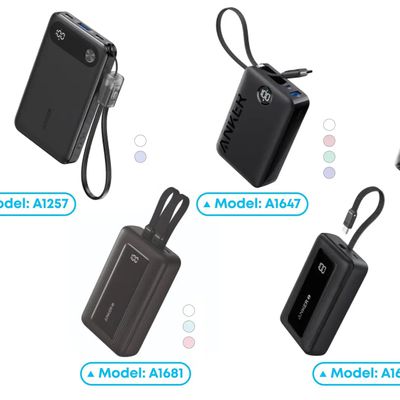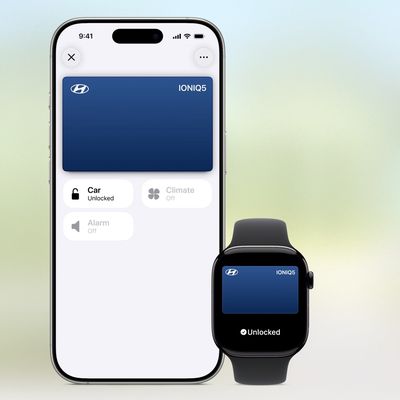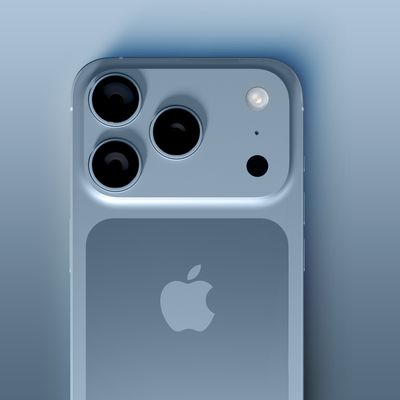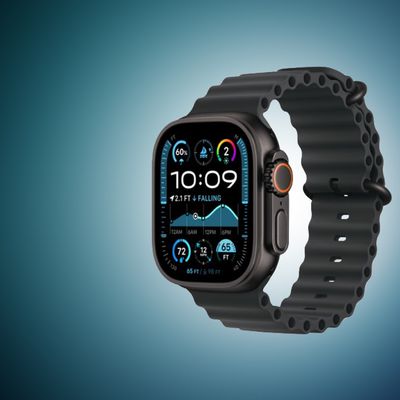Apple Explores Auto-Adjusting Security and Other Settings Based on Device Location
Apple has applied for a patent that describes a method of adjusting security and other settings for mobile devices based on the location of the device (via AppleInsider). The location data gathered by the system also includes contextual information that helps to identify the phone's position as a familiar or unfamiliar place.
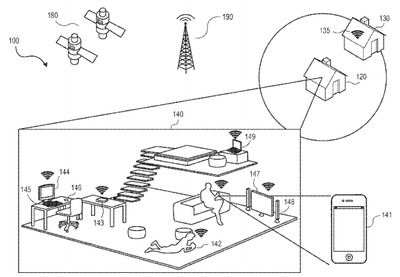
The system described in the patent titled "Location-sensitive security levels and setting profiles based on detected location" uses at least two pieces of data such as a saved Wi-Fi network or an identifiable cellular tower to determine the location of the device. Once identified, the software can change security options to match the environment, enabling Touch ID and disabling the simple passcode entry when a user is away from home, for example.
The security level and/or other device behavior, configurations, or settings on a mobile device can be modified based on the location of the mobile device. The location of the mobile device can be determined by analyzing location aspects present at a location, where any parameters or attributes of a location that can assist in identifying a particular location may be used as location aspects. In a setup process, the mobile device identifies available aspects at a location and can use the available aspects to determine a location context associated with a location. In a use example, the device identifies available aspects at a location and determines whether the available aspects match a previously defined location context. If the available aspects match the previously defined location context, device behavior, configurations, or settings on a mobile device can be modified.
Besides security settings, the system may also adjust the user interface, automatically modifying the home screen apps based on location. For example, the method could display Mail and other productivity apps at work and entertainment apps and games at home.
This location-based security patent application was filed in December 2012 and published July 3, 2014. If implemented, it would provide iOS device owners with another level of protection beyond what Apple' offers with its Touch ID fingerprint scanner. Touch ID was introduced last year with the iPhone 5s and is expected to expand to the iPad later this year. Apple also opened up an API for Touch ID in iOS 8 that will allow developers to use the fingerprint scanner for user authentication.
Popular Stories
Apple hasn't updated the AirPods Pro since 2022, and the earbuds are due for a refresh. We're counting on a new model this year, and we've seen several hints of new AirPods tucked away in Apple's code. Rumors suggest that Apple has some exciting new features planned that will make it worthwhile to upgrade to the latest model.
Subscribe to the MacRumors YouTube channel for more videos.
Heal...
Chase this week announced a series of new perks for its premium Sapphire Reserve credit card, and one of them is for a pair of Apple services.
Specifically, the credit card now offers complimentary annual subscriptions to Apple TV+ and Apple Music, a value of up to $250 per year.
If you are already paying for Apple TV+ and/or Apple Music directly through Apple, those subscriptions will...
Popular accessory maker Anker this month launched two separate recalls for its power banks, some of which may be a fire risk.
The first recall affects Anker PowerCore 10000 Power Banks sold between June 1, 2016 and December 31, 2022 in the United States. Anker says that these power banks have a "potential issue" with the battery inside, which can lead to overheating, melting of plastic...
In 2020, Apple added a digital car key feature to its Wallet app, allowing users to lock, unlock, and start a compatible vehicle with an iPhone or Apple Watch. The feature is currently offered by select automakers, including Audi, BMW, Hyundai, Kia, Genesis, Mercedes-Benz, Volvo, and a handful of others, and it is set to expand further.
During its WWDC 2025 keynote, Apple said that 13...
Apple's next-generation iPhone 17 Pro and iPhone 17 Pro Max are around three months away, and there are plenty of rumors about the devices.
Apple is expected to launch the iPhone 17, iPhone 17 Air, iPhone 17 Pro, and iPhone 17 Pro Max in September this year.
Below, we recap key changes rumored for the iPhone 17 Pro models:Aluminum frame: iPhone 17 Pro models are rumored to have an...
Apple last month announced the launch of CarPlay Ultra, the long-awaited next-generation version of its CarPlay software system for vehicles.
There was news this week about which automakers will and won't offer CarPlay Ultra, and we have provided an updated list below.
CarPlay Ultra is currently limited to newer Aston Martin vehicles in the U.S. and Canada. Fortunately, if you cannot...
Apple will finally deliver the Apple Watch Ultra 3 sometime this year, according to analyst Jeff Pu of GF Securities Hong Kong (via @jukanlosreve).
The analyst expects both the Apple Watch Series 11 and Apple Watch Ultra 3 to arrive this year (likely alongside the new iPhone 17 lineup, if previous launches are anything to go by), according to his latest product roadmap shared with...
Apple is planning to launch a low-cost MacBook powered by an iPhone chip, according to Apple analyst Ming-Chi Kuo.
In an article published on X, Kuo explained that the device will feature a 13-inch display and the A18 Pro chip, making it the first Mac powered by an iPhone chip. The A18 Pro chip debuted in the iPhone 16 Pro last year. To date, all Apple silicon Macs have contained M-series...
Apple is developing a MacBook with the A18 Pro chip, according to findings in backend code uncovered by MacRumors.
Earlier today, Apple analyst Ming-Chi Kuo reported that Apple is planning to launch a low-cost MacBook powered by an iPhone chip. The machine is expected to feature a 13-inch display, the A18 Pro chip, and color options that include silver, blue, pink, and yellow.
MacRumors...





